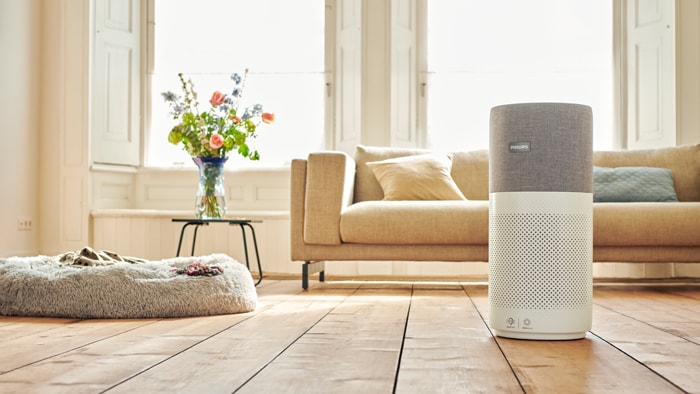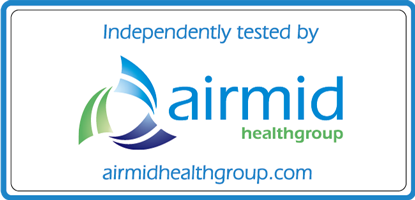
Protecting our shared air
Now more than ever, it’s vitally important that the air we are breathing indoors is clean and safe. There are many particles in the air that can cause a range of disturbances, from minor itching to major respiratory disease. Polluted or contaminated indoor air can be detrimental to health, wellness and quality of life.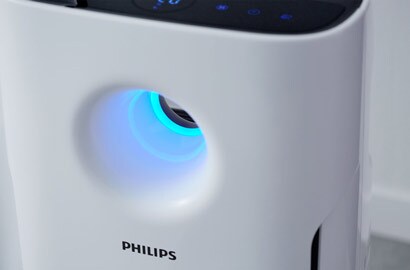
Protection against indoor pollutants such as aerosols and viruses
Governments and international organizations are already recommending filtration in addition to ventilation to help minimize COVID-19 transmission indoors(1)Philips air purifiers filter ultrafine particles 800x smaller than PM2.5, including aerosols and viruses.(2)
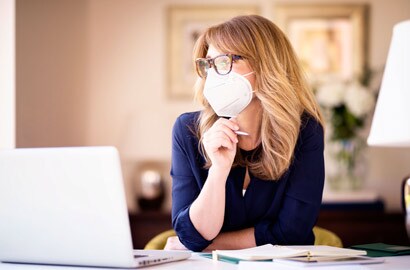
Transforming indoor air quality
For more than 35 years, Philips has been dedicated to improving the quality of air by developing advanced air purifiers, humidifiers and dehumidifiers. As people return to work, school and daily life, filtration and ventilation are key to ensuring that everyone can breathe healthier air.
-
![Philips steps up innovation efforts to improve clean air delivery in the home, offices and schools]()
Philips teams up with experts to study air purification impact on indoor virus aerosol levels; plans to verify devices' efficacy at filtering SARS-CoV-2 from the air.
Click here to learn more
Say goodbye to pollutants
Philips air purifiers actively monitor and clean the air in indoor spaces by removing 99.97%(3) of particles that pass through the filter. They remove pollutants, allergens, viruses and bacteria(3)





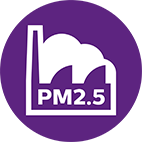





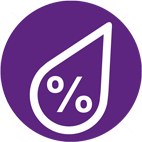
*Particles as small as 0.003 microns from the air that passes through the filter. Tested with staphylococcus and Influenza A (H1N1).
Cleaner air…anywhere
Where will you place your device?
Schools
Offices
Healthcare
Senior care
Hospitality
Please choose the classroom size:
Please choose the office size:
Please choose the room size:
Please choose the room size:
Please choose the room size:
Innovative technology for >99.9% filtration of allergens, bacteria and viruses2

Enjoy cleaner air, always
Get cleaner, healthier indoor air without using harsh chemicals. Philips air purifiers use the VitaShield Intelligent Purification System (IPS) to filter up to 99.97% of particles (including viruses, allergens, particles, bacteria and odors). Almost nothing escapes the VitaShield IPS sensor.
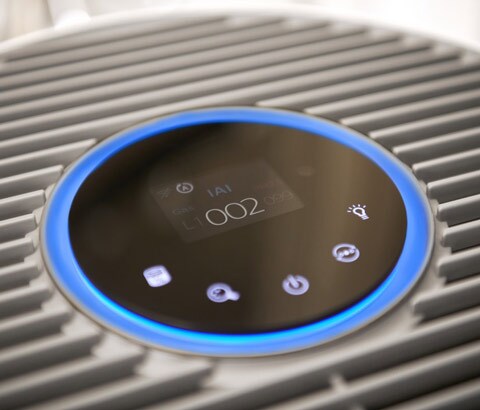
See the quality of your indoor air
AeraSense is cutting-edge air purification technology that identifies fine particles that are even smaller than PM 2.5. AeraSense notices every slight change in indoor air conditions—and automatically adjusts the air purifier to deliver cleaner air. Numerical feedback and an LED color ring show air quality in real time.

Nanoprotect HEPA filter
Philips Air Purifiers employ NanoProtect HEPA filters. These filters deliver 99.97% particle removal at 0.003µm. NanoProtect HEPA uses a combination of mechanical and electrostatic filtering, where mechanical action catches the bigger particles and electrostatic action is used to capture the smaller particles. This filter design enables optimum size, better air circulation, increased speed of air cleaning (CADR), lower energy consumption.

Control your system from anywhere
Breathe easy: App connectivity* brings quality indoor air right to your fingertips. Experience centralized control of your air purifiers—along with visibility to both indoor and outdoor air quality anytime, anywhere. *Available for some models.

Product range
Professional air quality solutions
-
800 Series
Compact Air Purifier
AC0820/30
- Purifies rooms up to 48 m²
- 190 m³/h clean air rate (CADR)
- HEPA filter
-
1000i Series
Air Purifier
AC1215/30
- Purifies rooms up to 63 m²
- 270 m³/h clean air rate (CADR)
- HEPA & Active Carbon filter
-
2000 Series
Air Purifier
AC2887/30
- Purifies rooms up to 79 m²
- 333 m³/h clean air rate (CADR)
- HEPA & Active Carbon filter
Contact Philips support
How can we help you?
Find manuals, FAQ's, software updates for your product.

- How do Philips Air Purifiers work?
-
An air purifier generates circulation of indoor air (combination of motor and fan), senses PM2.5 and reacts to the impurities in the air and filters polluted air via a filtration system that captures particulate matter, allergens, viruses, bacteria, harmful gasses, etc. This working cycle will be repeated as indoor air is recirculated by the air flow of the air purifier; hence it is very important that the air purifier has a high airflow to clean the air constantly.
- What CADR means?
-
CADR – Clean Air Delivery Rate is the absolute cleaned amount of air cleaned by an air purifier in time period (often expressed in cubic feet per minute) , we measure this as the combination of airflow and filtration efficiency.
CADR helps you to understand how fast an air purifier can clean a room, higher CADR in a room will result in faster cleaning leading and/or to lower concentration of pollutants in the air
- What is a NanoProtect HEPA filter and its benefits?
-
HEPA (High-Efficiency Particulate Air) filters are composed of a mat of randomly arranged fibers. HEPA filters are designed to target a range of particle sizes. These particles are trapped and stacked to the fiber. Philips Air Purifiers employ NanoProtect HEPA filters. These filters deliver 99.97% particle removal at 0.003µm. NanoProtect HEPA uses a combination of mechanical and electrostatic filtering, where mechanical action catches the bigger particles and electrostatic action is used to capture the smaller particles. This filter design enables optimum size, better air circulation, increased speed of air cleaning, lower material costs and lower energy consumption.
- What is the connection between 99.97% and the 0.003µm?
-
99.97% is normally connected with 0.3 μm as a commonly used filter specification, which is the HEPA requirement specified by some US HEPA standard. Philips air purifiers show 99.97% efficiency for even smaller particles. Our products are tested against 0.003 μm, which is the smallest particle which currently can be tested, showing high efficiency at 99.97% filtration.
- Why is important that Air Purifiers are optimized towards high CADR?
- Philips Air Purifiers are designed to provide best-in-class air purification performance for every-day real-life user, end-user, office, shop, school environments. They are meant for use in high-activity indoor premises such as home kitchens and living rooms, restaurants, schools classrooms, workplaces, retail stores, among others. For best performance, an air purifier needs to provide a high rate of air purification (measured by CADR as per industry standards). At Philips, we optimize our products to deliver higher CADR, aiming to increase protection against hazardous small particles, allergens and aerosols containing viruses. CADR stands for Clean Air Delivery rate and is a direct function of Filter of Efficiency and Air Flow through the filter.
- The Filter efficiency is measured by proportion of particle removal at a specified particle size. At Philips, we measure filter efficiency at a particle size of 0.3µm (assumed to be the most difficult particle size to capture) and to 0.003µm (smallest measurable particle size nowadays).
- Does Philips NanoProtect HEPA filter meet HEPA 13 or HEPA 14 standards?
-
HEPA-13 / H13 is a known industry standard in air filters that follow EU standard EN1822.
Certified HEPA-13 filters are guaranteed to deliver 99.95% air purification at MPPS, as per European standard. MPPS stands for “most penetrating particle size”, in other words this is the most difficult particle size to filter in any filter (not necessarily the smallest particle size). HEPA-13 standard has however a couple of important limitations. One of them is that it doesn’t consider rate of air purification (measured by CADR as per industry standards), which is arguably much more important in every-day real-life consumer situations.
Philips NanoProtect HEPA filters provide 99.97% filter efficiency at 0.003µm. The faster the air purification rate (CADR), the better the protection against hazardous small particles, allergens and aerosols from viruses. Based on this, NanoProtect HEPA filters are expected to do a better job than conventional HEPA-13 certified filters in every-day real-life consumer situations, cleaning the air faster with a more optimum design size, lower energy consumption and lower material costs, thus lower total cost of ownership for our intended consumers.
- How do I dispose of the Philips filter?
-
We recommend placing the filter into a disposable bag and following the good practice to wash your hands afterwards for at least 20 seconds and follow the advice of your local health authorities for handling potentially infected surface.
A 20 seconds hand washing period would then also be included for filter cleaning step.
- What is the performance of Philips NanoProtect HEPA filter against allergens, particles, viruses?
-
Philips NanoProtect HEPA filters from all air purifier ranges have an extreme high performance against allergens, particles and viruses as shown in the table below.
Pollutant
HEPA filter efficiency [%]
Test method
Viruses
> 99.9%
Airmid test (i.e. H1N1)
House dust mite
> 99.99%
OFI Vienna filter test
Cat dander
> 99.99%
OFI Vienna filter test
Birch pollen
> 99.99%
OFI Vienna filter test
Mold spores
> 99.99%
OFI Vienna filter test with Cladosporium cladosporioide spores
0.3 μm particles
> 99.97%
IUTA test
0.003 μm particles
> 99.97%
IUTA test
References
(2) Microbial Reduction Rate Test conducted at Airmid Health group Ltd. tested in a 28.5m3 test chamber contaminated with airborne influenza A(H1N1). (3) Filters particles as small as 0.3 microns from the air that passes through the filter. Tested with staphylococcus and Influenza A (H1N1).
(1) An air purifier by itself does not protect against Covid-19, but can be part of plan to protect yourself and your family (US Environmental Protection Agency)
